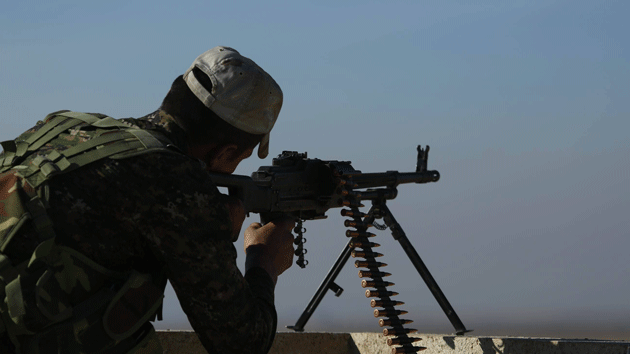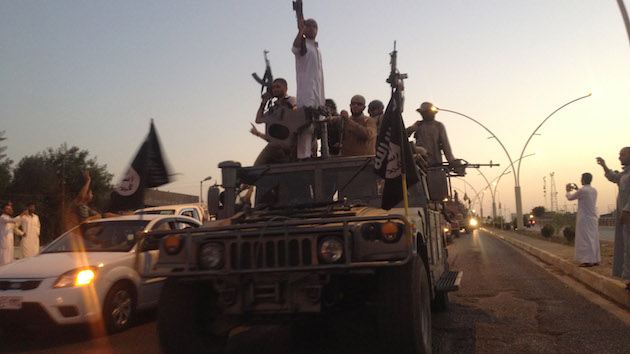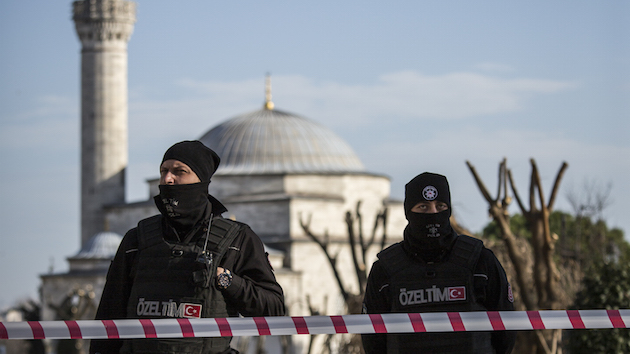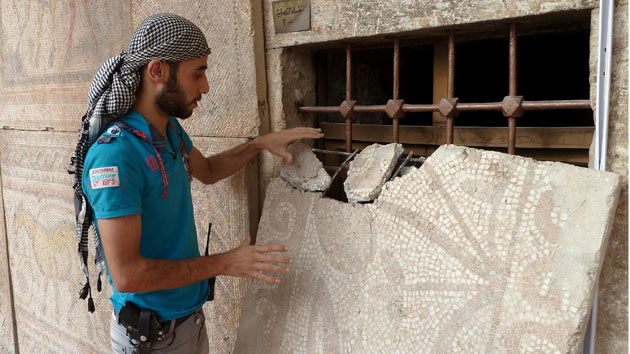
The US-backed Syrian Democratic Forces took the Tishreen Dam on the Euphrates River from ISIS last December.Sipa/AP
For months, members of Congress and former Pentagon officials have been criticizing the Obama administration’s approach to defeating ISIS, arguing that airstrikes and occasional special-forces operations are not enough to destroy the Islamist insurgency. In November, Michael Morell, the former deputy director of the CIA, told CBS’s Face the Nation, “I think it’s now crystal clear to us that our strategy, our policy vis-à-vis ISIS, is not working.” The following week, presidential candidate Hillary Clinton joined a collection of Democrats breaking with the president over his Syria policy. She called for “a new phase” and said it was time to “intensify and broaden our efforts to smash the would-be caliphate and deny ISIS control of territory in Iraq and Syria.”
The White House appears to be acknowledging these calls with a new intensification of the war against ISIS. The rules for airstrikes in Syria and Iraq have been relaxed to allow for more civilian casualties, and there are hints that more American ground troops may be deployed. Army Lt. General Sean MacFarland, who has been in charge of US operations against ISIS since October, told reporters on Monday that he will submit a number of proposals to the Obama administration for the upcoming campaigns, and he did not rule out US troops being deployed for direct combat. Last month, Secretary of Defense Ash Carter told CNBC, “We’re looking for opportunities to do more, and there will be boots on the ground, and I want to be clear about that.”
There are already American troops on the front lines with Iraqi soldiers in addition to security personnel and others assigned to specialized units. Some 200 Special Operations Forces soldiers have been tasked with rooting out members of ISIS’s leadership in Iraq and Syria. Officially, 3,650 US troops and private contractors are involved in the campaign against ISIS. Yet an analysis by the Daily Beast found that the actual number is closer to 6,000.
The recent appointment of MacFarland to lead the fight against ISIS also signals a push for more conventional warfare rather than relying heavily on airstrikes. MacFarland is best known for securing the Iraqi city of Ramadi in 2007 and fostering the “Sunni Awakening” that aligned a collection of Sunni sheikhs with the US military in its fight against Al Qaeda. “If this was going to be just an air campaign, it would make much more sense to have an Air Force officer in Baghdad and have him lead the charge,” says retired Army Col. Peter Mansoor, a former senior adviser to US commanders in Iraq who now teaches military history at Ohio State University. “Putting Lt. General Sean MacFarland in charge of the war against ISIS I think shows that the administration is thinking much more in terms of a holistic campaign that can include not just an air campaign but ground elements as well.”
In December, the Obama administration dispatched about 50 Special Operations troops to northern Syria to “tighten the squeeze” on ISIS and to vet rebels. “There’s some indication that they’re finding rebel groups who the United States can support who are willing to fight ISIS first, and Bashar al-Assad’s regime second,” says Mansoor. “It will be part of the jigsaw puzzle that is the civil war in Syria with so many groups on the ground.”
Following the expulsion of ISIS from Ramadi by US-supported Iraqi soldiers in December, plans are being drawn up for two major offenses to reclaim the group’s Syrian and Iraqi capitals of Raqqa and Mosul. As outlined by Military Times, the campaign could include more American troops on the ground, and it will rely on security forces in Iraq and an array of rebel groups in Syria, which often have competing agendas, to invade and retake the two ISIS strongholds. Several reports claim that the United States has participated in the expansion of an airfield in northern Syria, possibly to support Kurdish fighters against the so-called Islamic State. (United States Central Command has denied this, but a Pentagon official confirmed it.)
Meanwhile, recent airstrikes in Syria and Iraq point to the United States easing its rules of engagement, allowing for increased risk to civilians. In early November, 45 minutes after American planes dropped leaflets warning, “Get out of your trucks now, and run away from them,” A-10 Thunderbolts and AC-130 gunships destroyed 116 ISIS oil tankers near Deir Ezzor, Syria. Previously, these would not have been targeted because, as Operation Inherent Resolve spokesman Col. Steve Warren explained, “the truck drivers, themselves, [are] probably not members of ISIL. They’re probably just civilians.”
Early on a Sunday morning in mid-January, the US-led coalition dropped 2,000-pound bombs on an ISIS cash storage facility in Mosul, Iraq, wiping out “millions” of the group’s funds. Between five and seven people were killed in the attack. (It is not clear whether they were combatants.) American officials told CNN that US commanders had been willing to consider up to 50 civilian casualties, in light of the value of the target—a significant departure from previously stated goals of zero civilian casualties. Previously, Mansoor says, “the standard that the coalition air campaign had to meet was so high in terms of not causing civilian casualties that they would often pass by targets of significance.”
The simultaneous attacks in Iraq and Syria are a break from the Obama administration’s previous “Iraq First” strategy, which focused on first rolling back ISIS in Iraq and then Syria. The fight is also heating up beyond Iraq and Syria. In Libya, which has become ISIS’s largest stronghold outside Syria and Iraq, the United States and coalition members have increased reconnaissance flights and intelligence collection and are weighing options that could include airstrikes and Special Forces raids. In Afghanistan, the US military has carried out at least a dozen attacks, including airstrikes and raids, since President Barack Obama broadened the authority of military commanders there to begin striking ISIS’s new Afghan branch.
In addition to ramping up its own efforts, the United States has been asking its allies to contribute more to the fight. In late January, Secretary of Defense Carter asked NATO members for “more special operations forces, more strike and reconnaissance aircraft, weapons and munitions, training assistance, as well as combat support and combat service support.” Around the same time, Obama’s special envoy to the anti-ISIS coalition, Brett McGurk, became the first senior American official to visit Syria since 2012, spending two days in the northern Kurdish enclave of Rojava to “continue looking for ways to increase coalition pressure on ISIL,” according to an unnamed official who spoke to the Washington Post.
The intensified effort against ISIS won’t come cheap. The Obama administration is asking for more than $7 billion—a 35 percent increase—in the 2017 budget for the fight against ISIS. Despite the sudden military and financial push, Lt. General MacFarland assured reporters earlier this week, “We are closer to the end of the beginning of this campaign…The beginning of the end would be when we get Raqqa back.”
















